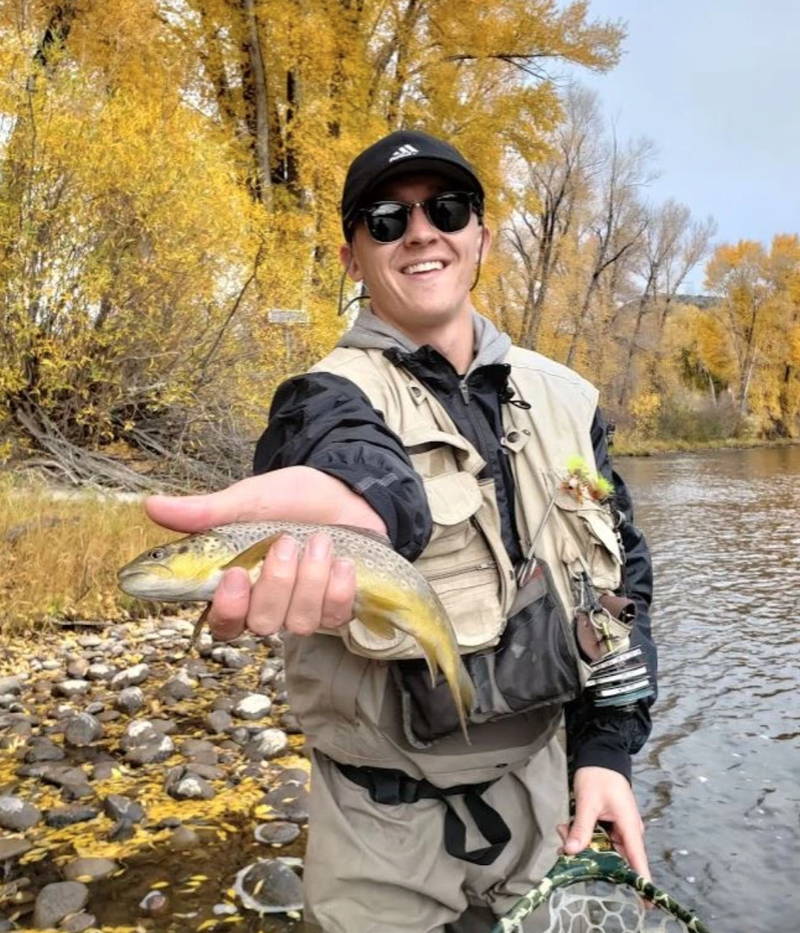There’s no denying it! Fall is one of our favorite times of the year to fish. Gone are the blistering hot days and sluggish trout. And gone is the rubber hatch of drunken city dwellers looking to escape the heat. As sure as the trees change color, so too will your approach to fly fishing. Here we’ll discuss our top 8 tips for fly fishing in the fall.

1.Terrestrials and Mayfly Spinners Are The Name of The Game: Bug activity during the fall months is aptly named in that flies, particularly terrestrials, literally fall from the sky. You’ve been staring at that Amy’s Ant in your fly box all summer. Your eyes are in desperate need of a break and you’ve developed early onset wrinkles from squinting for hours on end at those micro dries. Fear not. Dry fly fishing in early fall, prior to the first real frost, means you should break out the big guns. After an ant has hatched underground it develops wings and travels to surrounding colonies to mate. Then, when it is finished cross-pollinating and is nearing the end of its life, the ant is attracted to the water making it a prime target for hungry trout. Conversely, you’ll want to focus on very small (#20-24) mayfly duns and spinners, particularly in the olive variety. Olive colored mayflies are generally the most abundant from September through November and on comparatively warm days.
2.Experiment with different fly rigs: So now you’re probably wondering what type of setup you should choose. Start with a hopper dropper rig where you lead with a large (#8-10) terrestrial like the Chernobyl Chubby or Amy’s Ant followed by 24 inches of tippet and a smaller sub-surface nymph pattern. This is a very effective set up as you will cover all fronts (surface and subsurface). If you’re in the heart of an aggressive mayfly hatch, we suggest leading with the same or similar terrestrial or elk hair caddis followed by a smaller (#20-24) olive mayfly spinner or emerger pattern. The elk hair caddis is great because it imitates a caddisfly, but is often mistaken for the larger terrestrials.
3.Twitch Those Dries: In the fall, leaves from nearby trees are constantly making their way to the ground and floating downstream with the water. As a result, trout find it difficult to discern what is food and what is debris. After you’ve made your cast and you are comfortable with your drift, give the fly or flies a subtle twitch. Doing so will entice trout and reaffirm that what they’re seeing is edible. Don’t go too crazy though. Your flies should barely move.
4.Streamers: Fishing streamers can be hit or miss, but your odds will improve during the fall. During this time, the browns are spawning and become very aggressive and territorial. Trout will stack up at the tail end of pools and while they won’t be feeding heavily they will strike at just about anything.
5.Treat Them To Some Eggs With a Side of Bacon: During any spawning season, trout will key in on egg patterns and when paired with a worm, it is often irresistible for trout.
6.Move With Caution: For those tailwater junkies, this should come as no surprise, but for everyone else, remember to move slow and keep a low profile. While you should follow this rule year round, it is especially important during the fall. Flows are generally low and the water is clear leaving trout skittish and vulnerable. Trout are very aware of the seasonal changes and will be more cautious when feeding so don’t blow a hole by walking carelessly near or in the water. This applies to your casting as well. Again, you should always avoid slapping the water with a poor cast, but I assure you, trout will spook more easily in the fall. You can even take it a step further by using a longer leader. A 9 ft leader is generally fine, but the longer the better.
7.When all else fails, nymphs are your friend: Nymphing is arguably the most productive mode of fishing for any season. However, as air temps drop and after the first frost, hatch activity, particularly terrestrials, will slow and trout will feed predominantly on sub-surface flies. Remember, flows will be low and trout will congregate in the deeper runs, pools and pockets. Stick to smaller nymph patterns and shorter casts ensuring a drag free drift.
8.Timing: If you’re not an early riser, the struggle is over. In the fall, productivity generally doesn’t pick up until air and water temps start to rise and the sun has been out for several hours. Plan on sleeping in and getting the water around 11 am and fishing into the twilight hours.
